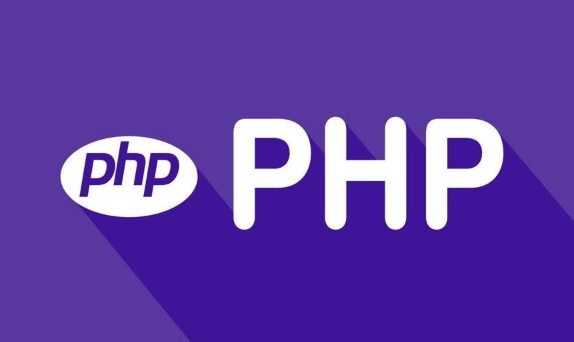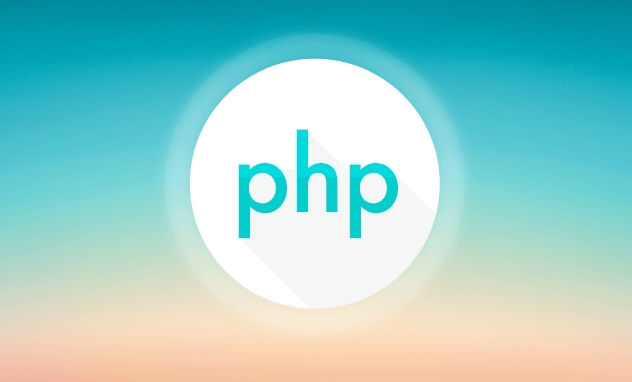 Backend Development
Backend Development
 PHP Tutorial
PHP Tutorial
 Automating Your PHP Environment Setup: Integrating PHP into a CI/CD Pipeline
Automating Your PHP Environment Setup: Integrating PHP into a CI/CD Pipeline
Automating Your PHP Environment Setup: Integrating PHP into a CI/CD Pipeline
Jul 26, 2025 am 09:53 AMChoose a CI/CD platform like GitHub Actions or GitLab CI for tight version control integration and minimal infrastructure; 2. Define a consistent PHP environment using containerization with images like php:8.2-cli or composer:latest and install dependencies via composer install --no-interaction --prefer-dist --optimize-autoloader while committing composer.lock; 3. Automate testing with PHPUnit, enable static analysis using PHPStan or Psalm, enforce code style with PHP CS Fixer, and perform security checks via local-security-checker or Dependabot; 4. Manage configuration securely using CI secrets or generated .env.ci files without hardcoding credentials; 5. Automate deployment only from the main branch after passing checks, using tools like Deployer.org or rsync, always deploying to staging first with a rollback strategy; Bonus: Cache the vendor directory using actions/cache@v3 in GitHub Actions to significantly reduce build times when dependencies remain unchanged.

Setting up PHP in a CI/CD pipeline isn’t just about running tests—it’s about creating a repeatable, reliable environment that mirrors production, from code commit to deployment. Automating your PHP environment setup ensures consistency, reduces human error, and speeds up delivery. Here’s how to do it effectively.

1. Choose the Right CI/CD Platform
Popular choices include GitHub Actions, GitLab CI, Jenkins, and CircleCI. For most modern PHP projects, GitHub Actions or GitLab CI are ideal because they integrate tightly with version control and require minimal infrastructure.
- GitHub Actions: Great if you're using GitHub; YAML-based workflows live in your repo.
-
GitLab CI: Built-in, with
.gitlab-ci.ymland strong Docker support. - Jenkins: More flexible but requires server maintenance.
Pick one that aligns with your hosting and team workflow.

2. Define Your PHP Environment Consistently
Use containerization or version-specific images to avoid "works on my machine" issues.
Use Docker or Pre-built Images
Most CI platforms support running jobs in containers. For example, in GitHub Actions:

jobs:
test:
runs-on: ubuntu-latest
container: php:8.2-cliOr use images with common extensions pre-installed:
container: composer:latest
Install Dependencies Reliably
Always run:
composer install --no-interaction --prefer-dist --optimize-autoloader
Add --classmap-authoritative in CI for faster autoloading.
Use a composer.lock file and commit it—this ensures everyone (including CI) uses the exact same versions.
3. Automate Testing and Code Quality
Your pipeline should do more than just run phpunit.
Run Tests
Install PHPUnit via Composer (not globally):
./vendor/bin/phpunit --coverage-text --colors=never
Include parallel testing if you have a large suite (using tools like Paratest).
Static Analysis & Linting
Add these steps to catch bugs early:
- PHPStan (level 8 recommended):
./vendor/bin/phpstan analyse src --level=8
- Psalm (alternative to PHPStan)
- PHP CS Fixer for code style:
./vendor/bin/php-cs-fixer fix --dry-run --diff
Fail the build if code doesn’t meet standards.
Security Checks
Use Security Checker (sensiolabs/security-checker) or local-php-security-checker:
./vendor/bin/local-security-checker
Or integrate Dependabot to monitor composer.json for vulnerable packages.
4. Manage Environment Variables and Configuration
Never hardcode credentials. Use:
- CI secret storage (e.g., GitHub Secrets, GitLab CI Variables)
- A
.env.cifile (not committed) or generate it during pipeline:
echo "DB_HOST=localhost" >> .env echo "APP_ENV=testing" >> .env
For Laravel or Symfony apps, ensure config caching is tested only in deployment jobs, not testing.
5. Deploy Automatically (With Caution)
Only deploy from the main branch (e.g., main or production) and after all checks pass.
Common deployment methods:
- SSH rsync (simple, for small apps)
- Capistrano (Ruby-based, but widely used for PHP)
- Deployer.org (PHP-native, great for Laravel/Symfony)
- Kubernetes or Docker Swarm (for containerized setups)
Example GitHub Action step:
- name: Deploy via Deployer
run: php vendor/bin/dep deploy production
env:
SSH_KEY: ${{ secrets.SSH_KEY }}Always include a rollback strategy and deploy to staging first.
Bonus: Cache Dependencies to Speed Up Builds
Speed up Composer installs by caching vendor/ directory:
In GitHub Actions:
- name: Cache Composer packages
uses: actions/cache@v3
with:
path: vendor
key: composer-${{ hashFiles('**/composer.lock') }}This cuts CI time from minutes to seconds when dependencies don’t change.
Automating your PHP environment in CI/CD comes down to consistency, testing depth, and smart tooling. With the right setup, every push can be a potential release—confidently.
The above is the detailed content of Automating Your PHP Environment Setup: Integrating PHP into a CI/CD Pipeline. For more information, please follow other related articles on the PHP Chinese website!

Hot AI Tools

Undress AI Tool
Undress images for free

Undresser.AI Undress
AI-powered app for creating realistic nude photos

AI Clothes Remover
Online AI tool for removing clothes from photos.

Clothoff.io
AI clothes remover

Video Face Swap
Swap faces in any video effortlessly with our completely free AI face swap tool!

Hot Article

Hot Tools

Notepad++7.3.1
Easy-to-use and free code editor

SublimeText3 Chinese version
Chinese version, very easy to use

Zend Studio 13.0.1
Powerful PHP integrated development environment

Dreamweaver CS6
Visual web development tools

SublimeText3 Mac version
God-level code editing software (SublimeText3)
 Mastering PHP-FPM and Nginx: A High-Performance Setup Guide
Jul 25, 2025 am 05:48 AM
Mastering PHP-FPM and Nginx: A High-Performance Setup Guide
Jul 25, 2025 am 05:48 AM
NginxhandlesstaticfilesandroutesdynamicrequeststoPHP-FPM,whichprocessesPHPscriptsviaFastCGI;2.OptimizePHP-FPMbyusingUnixsockets,settingpm=dynamicwithappropriatemax_children,spareservers,andmax_requeststobalanceperformanceandmemory;3.ConfigureNginxwit
 Setting Up PHP on macOS
Jul 17, 2025 am 04:15 AM
Setting Up PHP on macOS
Jul 17, 2025 am 04:15 AM
It is recommended to use Homebrew to install PHP, run /bin/bash-c"$(curl-fsSLhttps://raw.githubusercontent.com/Homebrew/install/HEAD/install.sh)" to install Homebrew, and then execute brewinstallphp or a specified version such as brewinstallphp@8.1; after installation, edit the php.ini file in the corresponding path to adjust memory_limit, upload_max_filesize, post_max_size and display_
 Harnessing the Power of WSL 2 for a Linux-Native PHP Development Workflow
Jul 26, 2025 am 09:40 AM
Harnessing the Power of WSL 2 for a Linux-Native PHP Development Workflow
Jul 26, 2025 am 09:40 AM
WSL2isthenewstandardforseriousPHPdevelopmentonWindows.1.InstallWSL2withUbuntuusingwsl--install,thenupdatewithsudoaptupdate&&sudoaptupgrade-y,keepingprojectsintheLinuxfilesystemforoptimalperformance.2.InstallPHP8.3andComposerviaOnd?ejSury’sPPA
 Demystifying PHP Compilation: Building a Custom PHP from Source for Optimal Performance
Jul 25, 2025 am 06:59 AM
Demystifying PHP Compilation: Building a Custom PHP from Source for Optimal Performance
Jul 25, 2025 am 06:59 AM
CompilingPHPfromsourceisnotnecessaryformostprojectsbutprovidesfullcontrolforpeakperformance,minimalbloat,andspecificoptimizations.2.ItinvolvesconvertingPHP’sCsourcecodeintoexecutables,allowingcustomizationlikestrippingunusedextensions,enablingCPU-spe
 Deploying a Scalable PHP Environment on AWS EC2 from Scratch
Jul 26, 2025 am 09:52 AM
Deploying a Scalable PHP Environment on AWS EC2 from Scratch
Jul 26, 2025 am 09:52 AM
LaunchanEC2instancewithAmazonLinux,appropriateinstancetype,securesecuritygroup,andkeypair.2.InstallLAMPstackbyupdatingpackages,installingApache,MariaDB,PHP,startingservices,securingMySQL,andtestingPHP.3.DecouplecomponentsbymovingdatabasetoRDS,storing
 Unlocking Peak PHP Performance: Configuring OPcache and JIT Compilation
Jul 24, 2025 pm 09:58 PM
Unlocking Peak PHP Performance: Configuring OPcache and JIT Compilation
Jul 24, 2025 pm 09:58 PM
OPcache and JIT are the core tools for PHP8.0 performance optimization. Correct configuration can significantly improve execution efficiency; 1. Enable OPcache and set opcache.enable=1, opcache.memory_consumption=192, opcache.max_accelerated_files=20000, opcache.validate_timestamps=0 to implement opcode caching and reduce parsing overhead; 2. Configure JIT to enable tracking JIT through opcache.jit_buffer_size=256M and opcache.jit=1254
 Automating Your PHP Environment Setup: Integrating PHP into a CI/CD Pipeline
Jul 26, 2025 am 09:53 AM
Automating Your PHP Environment Setup: Integrating PHP into a CI/CD Pipeline
Jul 26, 2025 am 09:53 AM
ChooseaCI/CDplatformlikeGitHubActionsorGitLabCIfortightversioncontrolintegrationandminimalinfrastructure;2.DefineaconsistentPHPenvironmentusingcontainerizationwithimageslikephp:8.2-cliorcomposer:latestandinstalldependenciesviacomposerinstall--no-inte
 Troubleshooting Common PHP Installation Pitfalls: A Diagnostic Checklist
Jul 26, 2025 am 09:50 AM
Troubleshooting Common PHP Installation Pitfalls: A Diagnostic Checklist
Jul 26, 2025 am 09:50 AM
VerifysystemrequirementsanddependenciesbyconfirmingOScompatibilityandinstallingessentiallibrariesandbuildtools,usingpackagemanagerslikeaptoryumtosimplifydependencymanagement.2.CheckPHPconfigurationandcompilationerrorsbyrunningaminimal./configurecomma





